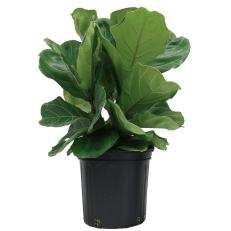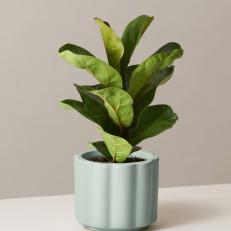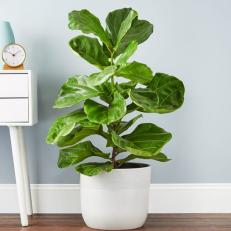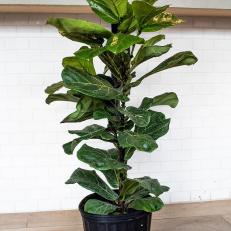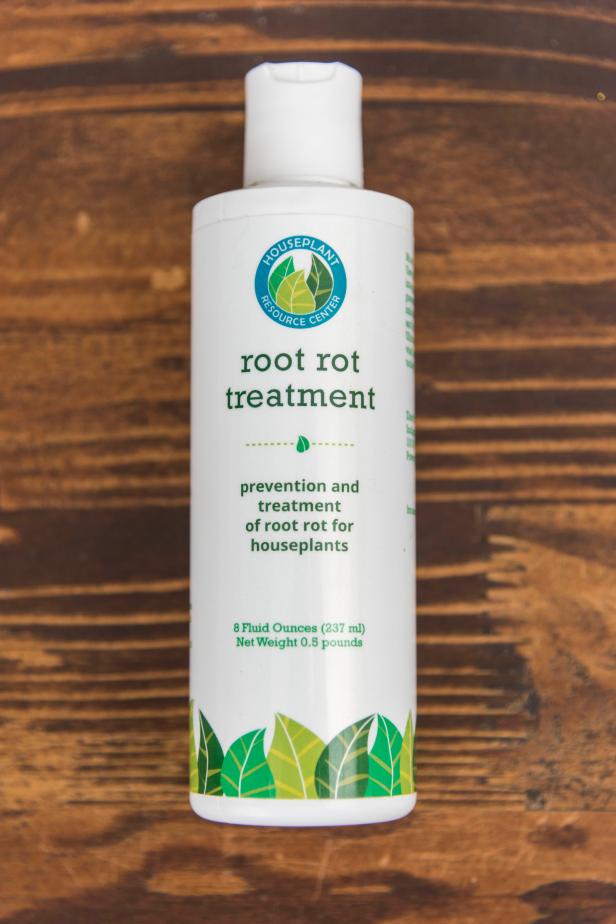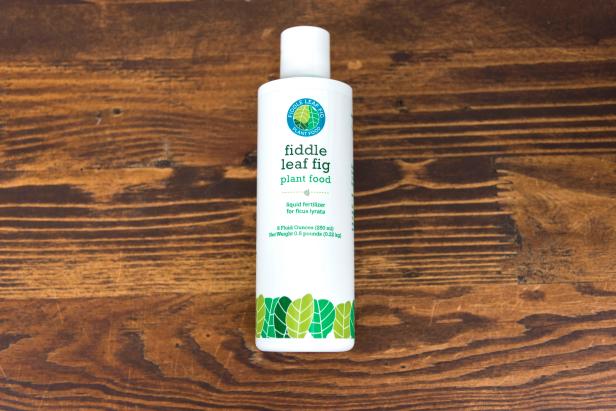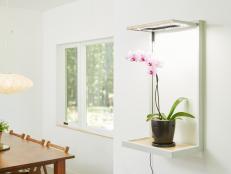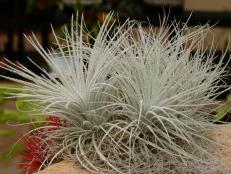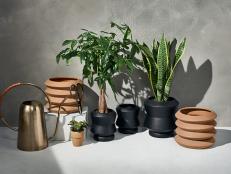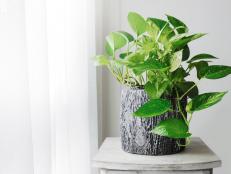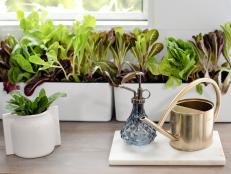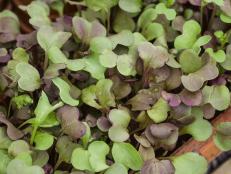How to Care for a Fiddle Leaf Fig
Pruning, watering, repotting, oh my! Keep your finicky ficus alive and thriving with our 10 easy-to-follow tips.

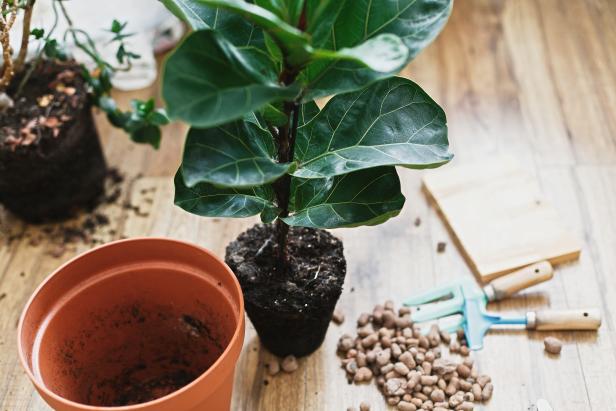
Getty Images/Bogdan Kurylo
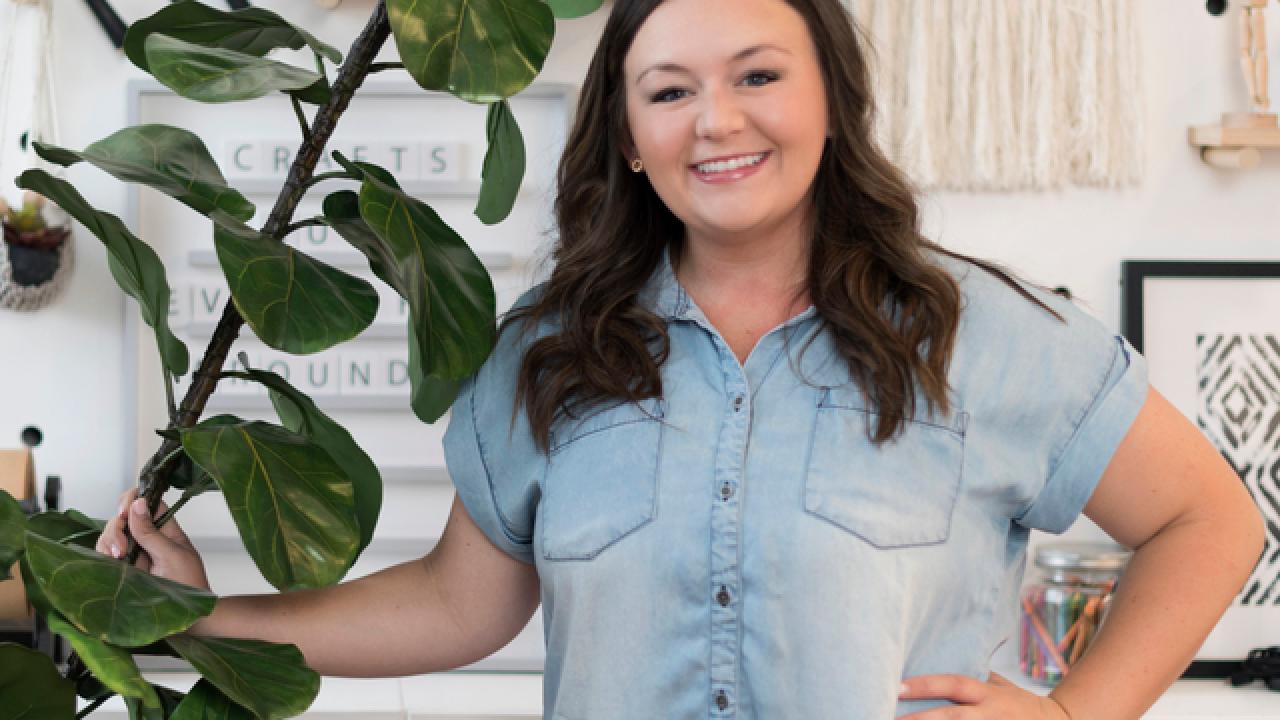
The hot houseplant of the moment (or really, of the last few years), the fiddle leaf fig makes a gorgeous, architectural statement in any room of the house. But while this lush plant, with its shiny, violin-shaped leaves, is stunning, it can be hard to keep alive. But never fear — we've got tips to help you keep it alive and thriving in your space.
The good news is that, once acclimated, the fiddle leaf fig (Ficus lyrata) can grow to 6 feet or taller, making it a stunning statement piece. There are also other varieties of the plant that don't grow as tall and are bushier, such as 'Suncoast' and 'Compacta,' if you're going for a different look.
So if you've just spent a pretty penny on one of these not-so-inexpensive houseplants and want to enjoy a return on investment for years to come, check out our comprehensive care tips and need-to-know facts before bringing it home.
Fun Facts
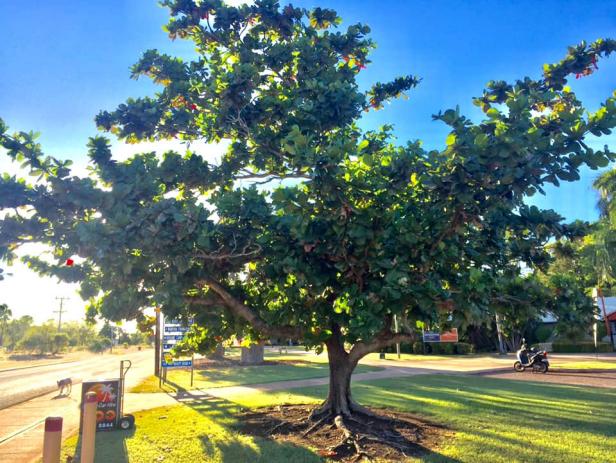
Holly Smith
Mature fiddle leaf fig.
The fiddle leaf fig is native to western Africa and grows naturally in a lowland rainforest environment. It's a banyan fig, which means that it begins its life high in the branches of another tree, then sends its roots down to the ground where it slowly strangles the host tree to death. Fun!
Location, Location
Start your fiddle off on the right foot by placing it in the absolute best spot in your home. These tropical plants hate drafts, so choose an area that isn’t directly in line with an exterior door, drafty window or near an air vent. They also thrive in a lot (and we mean A LOT) of very bright, indirect light. Situate your FLF in a bright room or close to a window, but not where the light will touch it directly. Once you’ve chosen the perfect place, don’t move it! Fiddles are creatures of habit and will flourish once they've found a happy, sunny home. Once a week, when you water, turn the plant slightly so that the leaves receive equal sunlight and don’t start to grow toward a light source.
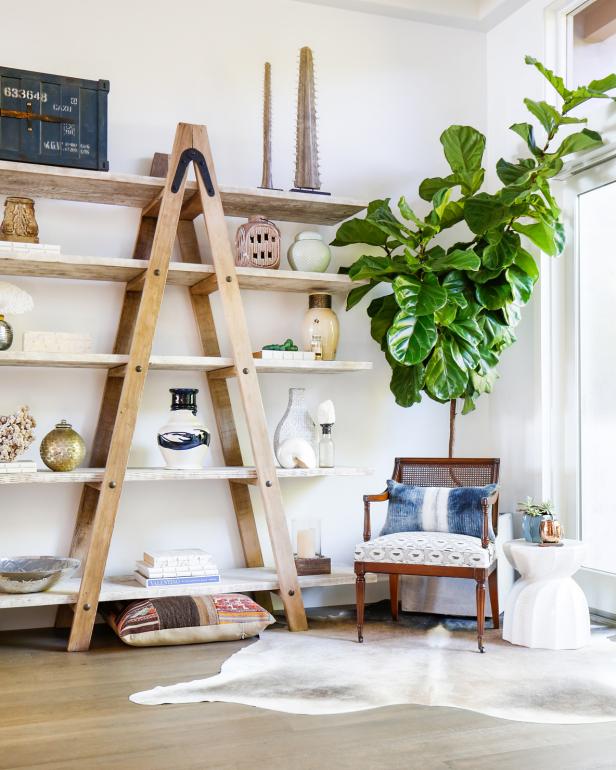
Tessa Neustadt
Tip: The drive home and relocation process may put your plant into shock, but you likely won't notice it for a month or two. If leaves start to look brown or sad at the end of month one, check to make sure you haven't overwatered and that the plant is getting adequate sunlight. If neither of those is the culprit, give your FLF love and time to adjust to its new environment.
Buy Fiddle Leaf Fig Trees Online
Clean the Leaves
If the leaves on your new plant are covered in water spots and dust, take a damp washcloth and gently wipe down each leaf. No need to use coconut oil as you may have heard — this method can actually suffocate the leaves over time. Continue to dust the leaves like this every month to keep spider mites and other pests at bay and your fiddle looking it's shiny-leaf best.

Sarah Busby
Check the Humidity
FLFs are native to tropical rainforests and thrive in warm, humid environments, like greenhouses. Don't live in a greenhouse? No problem. Most homes sit at about 40% humidity, which is fine, but if your house is on the dry side, mist your plant about once a week.
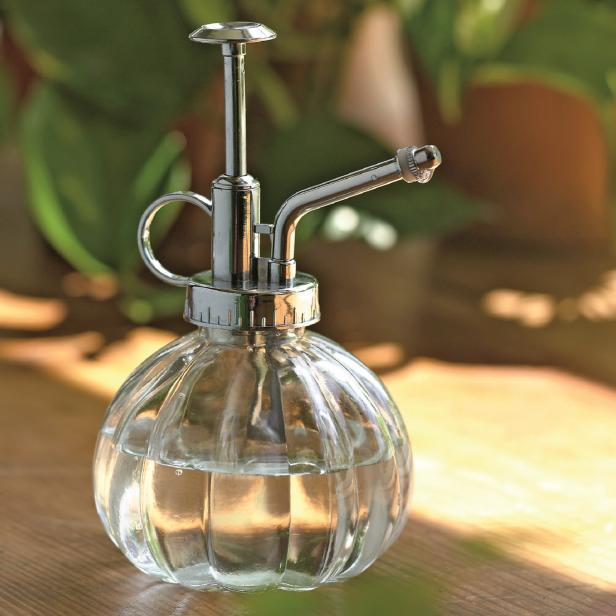
Gardener's Supply Company/gardeners.com
Don't Repot Yet
Fiddle leaf figs are decently happy as root bound plants and will do just fine in the pot you bought it in. We’ll talk more about repotting later but, for now, just place it inside a larger decorative container or basket and disguise the plastic store-bought pot with some decorative moss.
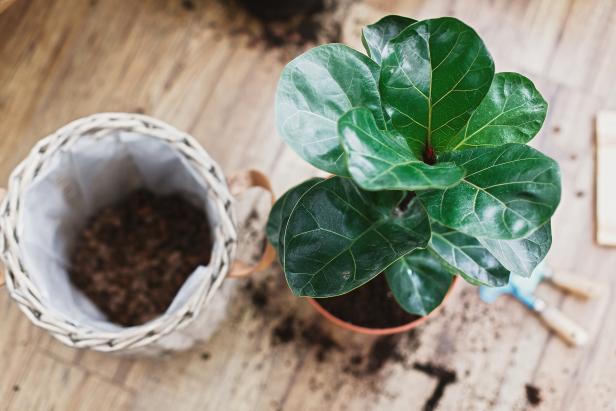
Getty Images/Bogdan Kurylo
How to Water
The number one way to kill a fiddle leaf fig is to overwater it or not allow for proper drainage. Water your plant about once a week or every 10 days. As we mentioned earlier, FLFs are native to a rainforest-like environment, which means they’re used to receiving a huge deluge of water with dry spells in between. So when you water at home, it’s best to soak the plant’s soil until dripping, then let it dry out completely between waterings.
You can do this one of two ways. Take the plant outside or to the bathtub, water it and let it drip for an hour or two, then bring it back in. If you don't want to carry your FLF back and forth to be watered, set it up on a plant stand over a drip tray. Whichever method you choose, make sure the roots aren’t sitting in excess water for an extended amount of time.
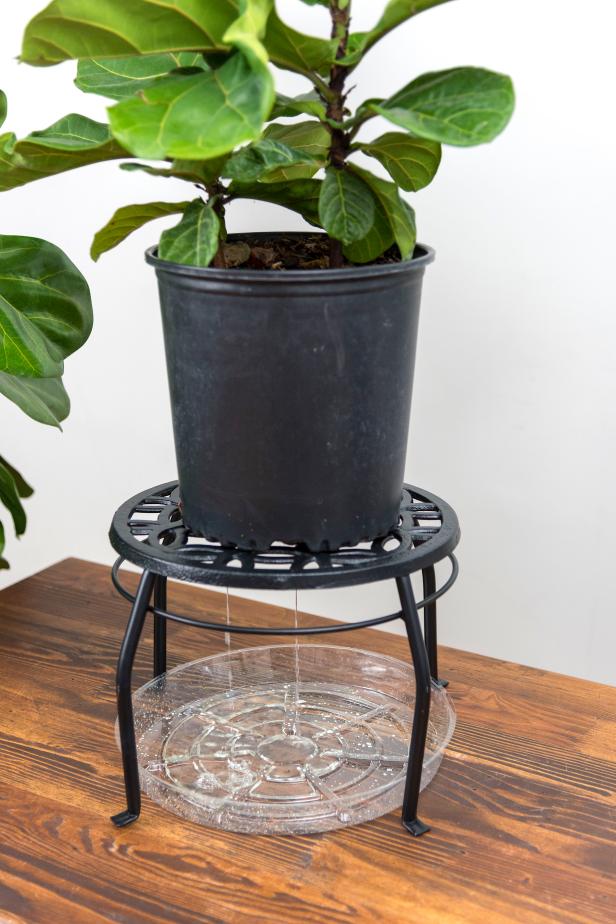
Sarah Busby
Not sure when to water again? Simply insert your finger into the top 2 inches of soil. If it’s still wet, leave it alone. Don't trust yourself? Buy an inexpensive soil moisture meter and water when the meter reads almost dry.
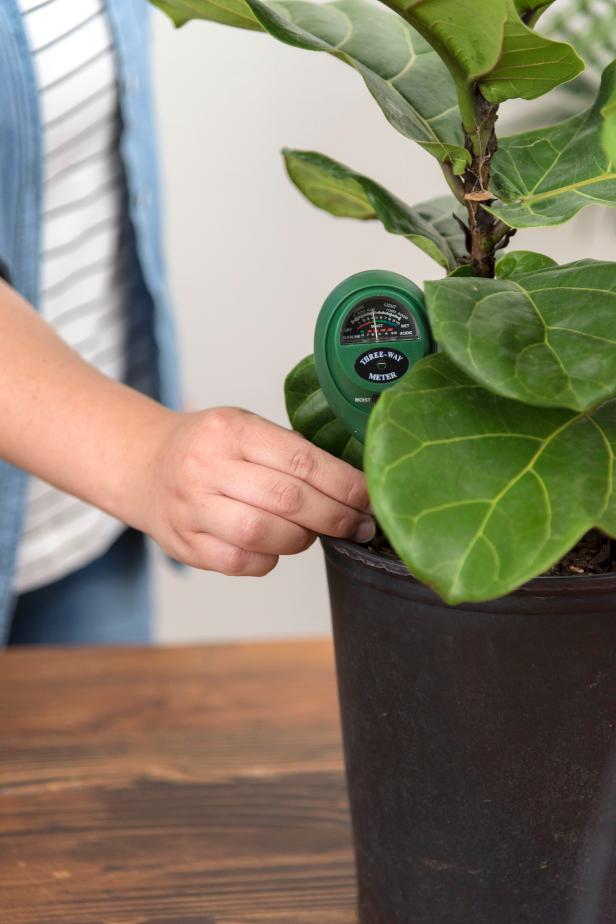
Sarah Busby
Overwatering
Do the leaves of your FLF resemble a green and brown dalmatian? Chances are, you've overwatered. Inadequate drainage or too little time between waterings allows root rot to set in. When water sits for an extended amount of time, dormant pathogens in the soil flourish, feeding on the plant’s root system. By allowing the soil to dry out in between waterings, pathogens starve and your plant lives to see another day.
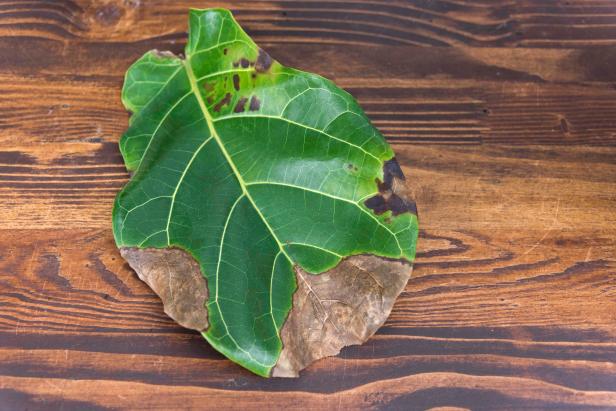
Sarah Busby
Can You Save a Rotting Plant?
Sort of. What's lost is lost. Distressed leaves will eventually fall off, leaving bare branches behind. But with diligence and love, you can rehabilitate your plant over time (we're talking half a year or more). Here's how:
First, remove any sickly-looking leaves with sharp pruning shears (see our pruning tips below). Next, lay the plant on its side and gently remove the pot. Assess root damage and remove rotted sections. Rotted roots are brown and soft, healthy roots are white and firm. Remove as much of the old soil as possible, then repot in fresh, well-draining potting soil (see our repotting tips below). Water with root rot formula, following all the watering tips listed above — the most important being that you allow the soil to dry out before the next watering. If it's time, fertilize as normal (see fertilizing tips below).
Fortify your houseplants against root rot with Root Supplement by Houseplant Resource Center. By promoting healthy root systems, your plants are better able to absorb nutrients and become hardy and vibrant.
How and When to Fertilize
If you bought your FLF in the spring or summer, fertilize once a month with a fertilizer that has a 3:1:2 ratio of nitrogen-phosphorus-potassium (or NPK for short). While that may sound intimidating, you can easily buy this fertilizer premade for $21 online. Simply mix the fertilizer into your watering can according to package instructions and water like normal throughout the spring and summer. No need to fertilize in the fall and winter when the plant is dormant.
Grow your fiddle leaf fig into a towering giant with this Fiddle Leaf Fig Tree Plant Food. Specially formulated to provide optimal nutrition, this liquid plant food encourages strong roots and stems without burning your plant.
Pruning and Shaping
You’ve probably seen two kinds of fiddle leaf figs — the tall, tree-like type with a long, bare trunk, and the short bushy type with leaves that start at the base. These are the same plant, but one has been manipulated through pruning and shaping. If you want to shape your plant, do so in the spring when it has plenty of time and energy to regrow. It takes 18 months to get a fiddle to where you want it, so patience is key.
There are two reasons to prune: to remove dead leaves and encourage new growth. When leaves start to brown significantly (due to stress or root rot), it’s best to remove them so they don’t suck energy from the plant. Wearing gloves, use sharp, clean pruning shears and cut the stem of the leaf at an angle, about half an inch away from the trunk. While pruning is a necessary part of plant maintenance, be careful not to remove more than 5-10 leaves at a time to avoid shock. You can also use this method to remove lower leaves for a tree-like shape.
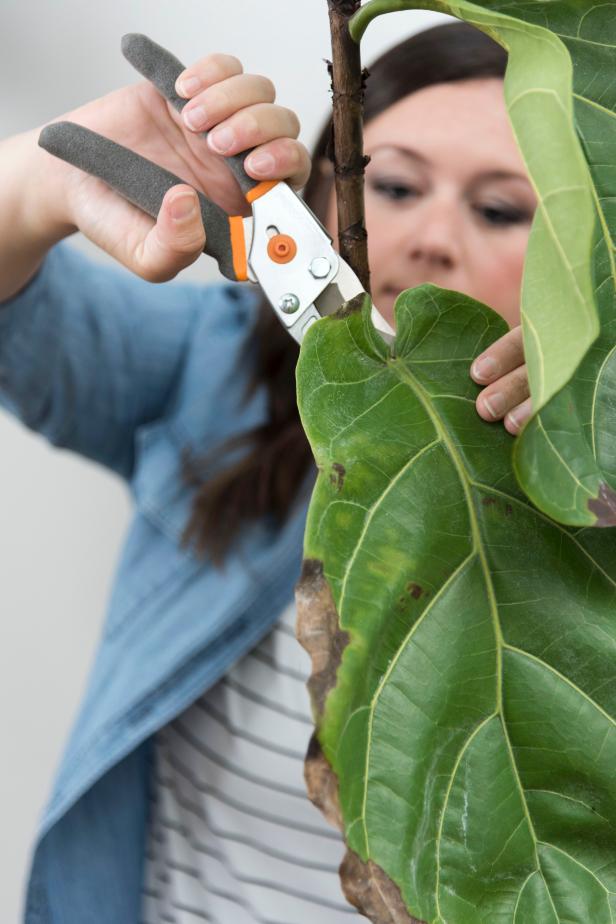
Sarah Busby
To encourage new top growth, cut or pinch and snap off the bud at the top of the plant. Once you see the sap start to run, you know you’ve done it right. You can also cut off the entire top of plant (also known as radical pinching) when it starts to get too tall.
How and When to Repot
When your plant starts to look too big for its pot or the roots are starting to grow out of the drainage holes, it’s time to repot – usually every one to two years. Choose a pot (with a couple of drainage holes) that’s about two inches wider than the original pot. Add about two to three inches of stones to the bottom of the new pot. This allows for drainage and prevents rot while also facilitating necessary humidity. Add well-draining, moisture-control potting soil to the new pot and push it to the edges, leaving a crater in the center for the root ball. Remove root ball from the old pot and cut out any brown, rotten roots. Loosen the root ball gently with your hand and place it in the soil crater. Top with more soil, leaving an inch between the soil and lip of the container, and water as usual.

Sarah Busby
More: Dress Your Fig Like a Designer
23 Gorgeous Ways to Style a Fiddle Leaf Fig 23 Photos
The fiddle-leaf fig is one of the most popular houseplants in the design world, and the trend doesn’t seem to be dying off anytime soon. These rooms we love prove this versatile statement tree works in virtually any space.







